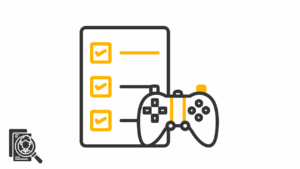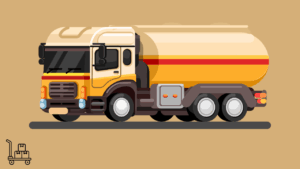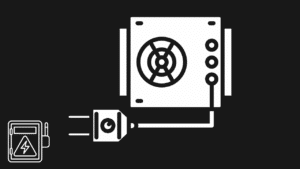Apart from ensuring the safety of your furry pet, you also want to be at peace with your neighbors. The traditional fence may not provide the exact solution you are looking for, and that is why it is a good option to go for the invisible dog fence. However, several misconceptions around these fences may leave you wondering if you are making the right choice. The invisible dog fences are not harmful to your dog or humans, and here are benefits you can expect from them. In this article we’ll answer the question, are invisible dog fences harmful?
1 Peace Of Mind: Invisible Dog Fences
When it comes to preserving your pet’s safety, the invisible fence is the way to go. They provide a safe boundary using digital radiofrequency. When they receive an audible warning and electric correction, the pets get to know when they are approaching their boundary limit.
Traditional fences may have their place, but the peace of mind with invisible fences is. Some myths claim that invisible fences may cause burns, but it is not true because the amount of milliamps present in the electric fence is insufficient to cause a burn. If uncertain of where to get genuine fences, you can get guidance from The Pampered Pup and pick the best fence for your dog.
2 Adaptable
Traditional fences may not be ideal for areas that are hilly or sloppy. However, electric fences can work on any terrain. The fence can also cover a wider area allowing dogs to have a large place for exercising.
3 Less Interference With The Scenic View
Electric fences are invisible; thus, you get to preserve the scenic view of your yard. There is less interference when accessing your home since there is no need to close or open gates. Even when you have placed flags after training the dog, you can remove them.
4 Reliable Invisible Dog Fences
The power supply may be off due to the collar battery dying or a wire cutting, making it possible for the dog to escape. However, since you have to train your dog after installing the invisible fences, the pet learns to respect the set boundaries even when the electric supply is off. Therefore, the fences are reliable for the long-term safety of your dogs.
5 No Chances Of Aggression
Unlike what many believe, invisible fences do not make a dog aggressive. If a dog portrays aggressive behavior, it is most likely due to misused correction limits and poor training. However, when the training is safely done using approved training methods, your pet has no chance of aggressive behavior.
6 Convenience
Trenches have to be dug to put fencing posts to act as a barrier. You also do not need rolling wire, nailing boards or welding iron, and other costly materials. The labor for setting up the fence can be high, especially if you have to hire people to do it.
Sometimes depending on your area, some fencing material may not be allowed for construction.
Invisible fences save you trouble since they are easy and quick to install, thus saving time and minimizing the cost of buying materials.
Quick comparison of yard control options
Use this table to weigh tradeoffs. Your choice should match your dog, your property, and your lifestyle.
| Option | Safety risk to your dog | Escape prevention | Training needed | Cost range | Big pro | Big con |
|---|---|---|---|---|---|---|
| Invisible fence with tone and static | Moderate if misused, lower with careful training | Good for many dogs, poor for highly driven or fearful dogs | Moderate, two to three weeks of structured work | Low to medium | Yard stays open to view | Does not block wildlife, strangers, or traffic |
| Physical fence, six feet wood or vinyl | Low when maintained | High, especially for non jumpers | Low, boundary training still helps | Medium to high | Reliable barrier with visual clarity | Requires permits, maintenance, and budget |
| Portable exercise pen or run | Low with supervision | Medium, suited for short sessions | Low | Low to medium | Flexible, good for renters | Limited space, needs supervision |
| Tether or tie out with supervision | Moderate, risk rises if left alone | Low to medium | Low | Low | Cheap and simple for brief use | Tangling risk, limited freedom, never safe unsupervised |
| Long line with boundary training | Low when supervised | Medium with handler present | Moderate | Low | Doubles as training tool, builds recall | Requires human presence every time |
| GPS smart collar without static | Low | Low to medium, relies on alerts and training | Moderate | Medium | No static correction |
Invisible Dog Fences Frequently asked questions
Are invisible fences safe for puppies
Wait until your veterinarian clears you for collar use, usually around six months. Focus early months on recall, name response, and calm boundary games on a long line.
Do corrections hurt
Static collars create discomfort. The ethical question is whether the discomfort is brief, predictable, and used to teach a clear choice that increases freedom. If that is not the case for your dog, choose another method.
Can invisible fences make dogs aggressive
They can contribute when a dog links discomfort with people or animals near the boundary. Careful training and prevention of rehearsed arousal reduce this risk. Dogs that already show territorial aggression are poor candidates.
What about storm or power outages
Have a backup plan. Keep the collar on only when you are present. During storms or system faults, move your dog indoors or to a tethered long line under supervision.
A balanced conclusion about invisible dog fences harmful
Invisible dog fences sit in a gray zone. They can work for certain dogs on certain properties when training is careful and supervision is consistent. They can also create fear, frustration, or dangerous run through behavior when used as a shortcut. Begin with your dog’s welfare. If you choose an invisible fence, follow a structured training plan, supervise early use, and layer identification and recall. If your setting or your dog’s temperament raises red flags, invest in a physical barrier or supervised exercise instead. The right choice is the one that keeps your dog safe, confident, and able to enjoy the yard without stress.








